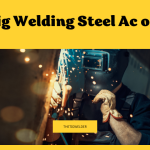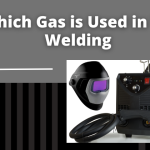Welding is a technical skill that involves using specialized equipment to fuse metal pieces using extreme heat and pressure. To produce high-quality welds, a welder must have a strong understanding of the properties of different metals, how they respond to heat and pressure, and the proper techniques for manipulating the welding equipment. This requires a high level of precision and control, as even small variations in the welding process can result in defects or weaknesses in the finished weld.
Welding in various positions can present unique challenges and difficulties due to each position’s different physical and visibility constraints. For example, welding in a vertical position may require the welder to support the weight of the workpiece, while welding in a horizontal position may require the welder to work in a cramped or confined space. Each position also has unique visibility challenges, as the welder must be able to see the weld joint and workpiece to accurately control the weld. As a result, welders must be able to adapt their techniques and equipment to the specific requirements of each welding position to produce high-quality welds.

The Hardest Welding Position
The hardest welding position is generally considered overhead welding, which involves holding the welding torch and workpiece above the head while standing on a ladder or scaffolding. This position can be physically demanding, as the welder must hold the torch and workpiece in place for an extended period, often while standing on an unstable surface. In addition, overhead welding presents several other challenges, including limited visibility, an increased risk of burns, and difficulty maintaining correct posture. As a result, overhead welding requires a high level of balance, coordination, physical endurance, and proper training and technique to produce high-quality welds.
Challenges of Overhead Welding
Overhead welding presents several challenges, including:
- Limited visibility: The welder may have difficulty seeing the workpiece and the weld joint due to the torch’s position and the weld’s angle. This can make it difficult to accurately control the weld and produce a high-quality finished product.
- Physical strain: Holding the welding torch and workpiece above the head for an extended period can be physically demanding and lead to fatigue. This can make it difficult to maintain consistent weld quality and increase the risk of accidents or injuries.
- Risk of burns: The welder is at an increased risk of burns due to the proximity of the torch to their face and neck. This risk can be mitigated by wearing proper protective gear, such as a welding helmet, but it is still a potential hazard.
- Difficulty maintaining correct posture: Maintaining correct posture while welding overhead can be difficult, as the welder must support the weight of the torch and workpiece while also trying to maintain proper alignment with the weld joint. This can lead to poor weld quality and increased fatigue.
Overall, overhead welding requires a high level of skill and physical endurance to overcome these challenges and produce high-quality welds.
Tips for Overcoming the Challenges of Overhead Welding
Some tips for overcoming the challenges of overhead welding include:
- Using a supportive and comfortable welding helmet: A good welding helmet should provide adequate coverage and ventilation to protect the welder from burns and fatigue.
- Taking frequent breaks to rest and stretch: Welding in an overhead position can be physically demanding, so it is important to take frequent breaks to rest and stretch to prevent fatigue.
- Properly positioning the workpiece and welding torch: Proper positioning of the workpiece and welding torch can minimize strain and improve visibility.
- Using a welding jig or fixture to hold the workpiece in place: A welding jig or fixture can help hold the workpiece in place, making it easier to maintain proper posture and control the weld.
- Practicing proper ergonomics to maintain correct posture: Proper posture is important to produce high-quality welds and prevent fatigue. Welders should maintain a neutral spine position and use proper lifting techniques to support the weight of the torch and workpiece.
By following these tips, welders can effectively and safely overcome the challenges of overhead welding and produce high-quality welds.
Conclusion
In conclusion, overhead welding is generally considered the hardest welding position due to its physical demands and visibility challenges. However, with proper training and techniques, welders can learn to effectively and safely weld in this position. Welders must be properly trained in the specific techniques and safety measures required for overhead welding to produce high-quality welds and minimize the risk of accidents or injuries. By following proper safety protocols and using the right equipment and techniques, welders can successfully and confidently tackle the challenges of overhead welding.

It’s been years since I got into welding as a side hustle. It’s been so long since Doing All kinds of welds for business and pleasure as this is my hobby. Being in this field I have learned from hands-on-experience also came to know what gears work and what doesn’t. The Tig Welder is my own platform where I use to share my experience.






Leave a Reply